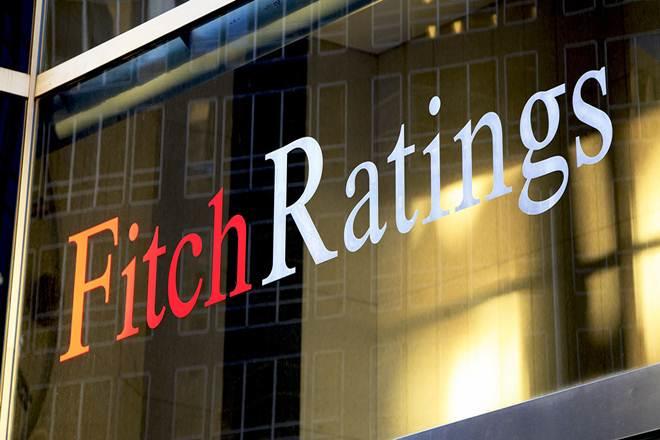LAHORE: International credit rating agency Fitch Ratings has affirmed Pakistan’s Long-Term Foreign-Currency Issuer Default Rating (IDR) at ‘B-‘ with a ‘Stable Outlook’.
In a press release issued on Monday, Fitch stated that Pakistan’s ‘B-‘ rating reflects a challenging external position characterised by a high external financing requirement and low reserves; weak public finances, including large fiscal deficits and a high government debt-to-GDP ratio; and weak governance indicators.
Fitch highlighted that external vulnerabilities have been reduced over the past year as a result of policy actions by the authorities and financing unlocked through an International Monetary Fund (IMF) programme, which helped reduce the current account deficit and supported a modest rebuilding of reserves.
“Still, external finances remain fragile with relatively low foreign exchange reserves in the context of an elevated external debt repayment schedule and subdued export performance. Pakistan’s liquidity ratio is 111.4pc, much weaker than the historic ‘B’ median of 161.2pc,” Fitch held.
The agency forecast a further narrowing of the current account deficit to 2.1pc of Gross Domestic Product (GDP) in the year ending June 2020 (FY20) and 1.9pc in FY21, from 4.9pc in the last fiscal year. “Import compression remains the predominant driver of the narrowing deficit, facilitated by a depreciation of the rupee against the US dollar of around 30pc since December 2017 and tighter monetary conditions. Exports are forecast to grow modestly from a low base.”
‘SBP MEASURES’
According to the report, the State Bank of Pakistan’s adoption of a more flexible exchange rate last May and capital inflows are also supporting a rebuilding of foreign exchange reserves. Fitch expects gross liquid foreign exchange reserves to rise to around $11.5 billion by FY20, from $7.2 billion in FY19.
The report further highlighted that the SBP has reduced its net forward position by over $3 billion since June, contributing to a considerable improvement in its net foreign exchange reserves, although these remain negative. Fitch expected continued adherence to the new exchange rate regime to help rebuild foreign-exchange reserves and improve external resilience.
Fitch said that access to external financing has improved after the approval of a $6 billion, 39-month Extended Fund Facility (EFF) by the IMF Board in July 2019. According to the IMF, this has potentially unlocked about $38 billion in financing from multilateral (including from the IMF) and bilateral sources over the programme period. It may also facilitate financing from offshore capital markets.
The EFF is on track, with the first review completed in December. However, implementation risks remain high in Fitch’s view, particularly given the politically challenging nature of the authorities’ reform agenda.
Gross external financing needs are likely to remain high, in the mid-$20 billion range, over the medium term due to considerable debt repayments and despite the smaller current account deficit. Sustaining inflows to meet these financing needs could prove challenging over a longer horizon without stronger export growth and net FDI inflows, the Fitch press release said.
Public finances are a key credit weakness and deteriorated further in FY19 prior to the approval of the IMF programme. The general government deficit slipped to 8.9pc of GDP in FY19, from 6.5pc in FY18, as revenues contracted, due in part to one-off factors, such as lower SBP dividends and delayed telecom license renewals. General government debt rose to 84.8pc of GDP, well above the current ‘B’ median of 54pc, due to the currency depreciation, higher fiscal deficit, and build-up of liquidity buffers. Debt/revenue also jumped sharply to 667pc, compared with the historic ‘B’ median of 252pc.
‘GROWTH FORECAST’
Tighter macroeconomic policies are further slowing GDP growth, which Fitch forecasts at 2.8pc in FY20 from 3.3pc in FY19. “We expect growth to recover gradually to 3.4pc by FY21. Inflation has also continued to rise sharply from the cost pass-through of the currency depreciation and increases in energy tariffs. Fitch forecasts inflation to average 11.3pc in FY20 compared with 6.8pc in FY19. The SBP is likely to keep the policy rate at the current peak of 13.25pc in the coming months, before modest cuts towards the end of FY20 as inflationary pressures would begin to fade.”
Improvements to the business and security environment could further support the growth outlook. Domestic security has improved over the past couple of years, measured by a decline in terrorist incidents. Nevertheless, ongoing international perceptions of security risks and geopolitical tensions with neighbouring countries weigh on investor sentiment. The government has also made progress on business reforms, reflected in the country’s move from 136th to 108th in the World Bank’s latest Ease of Doing Business survey.




